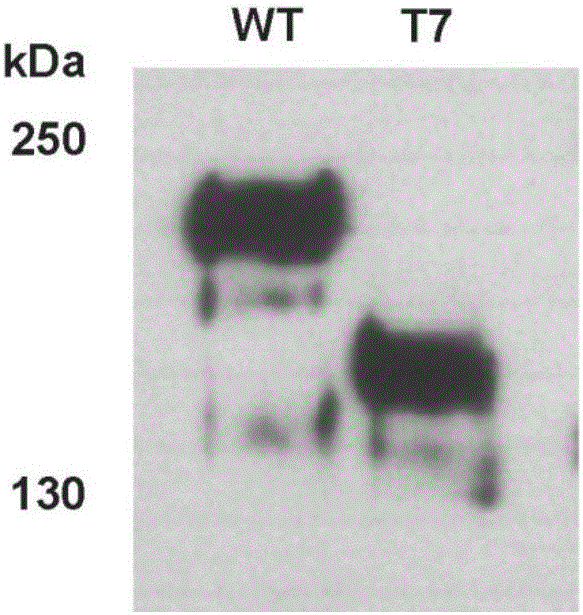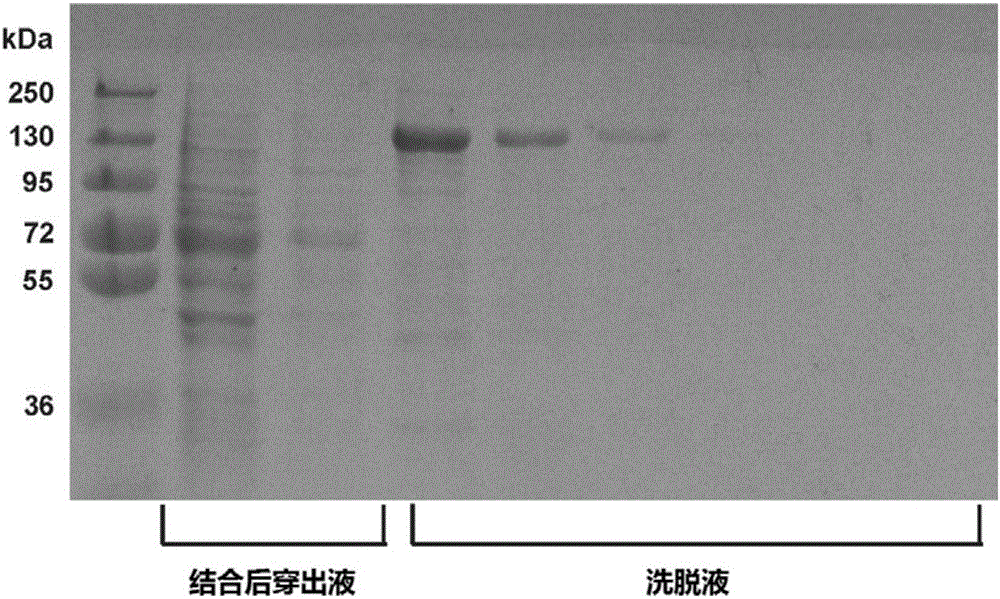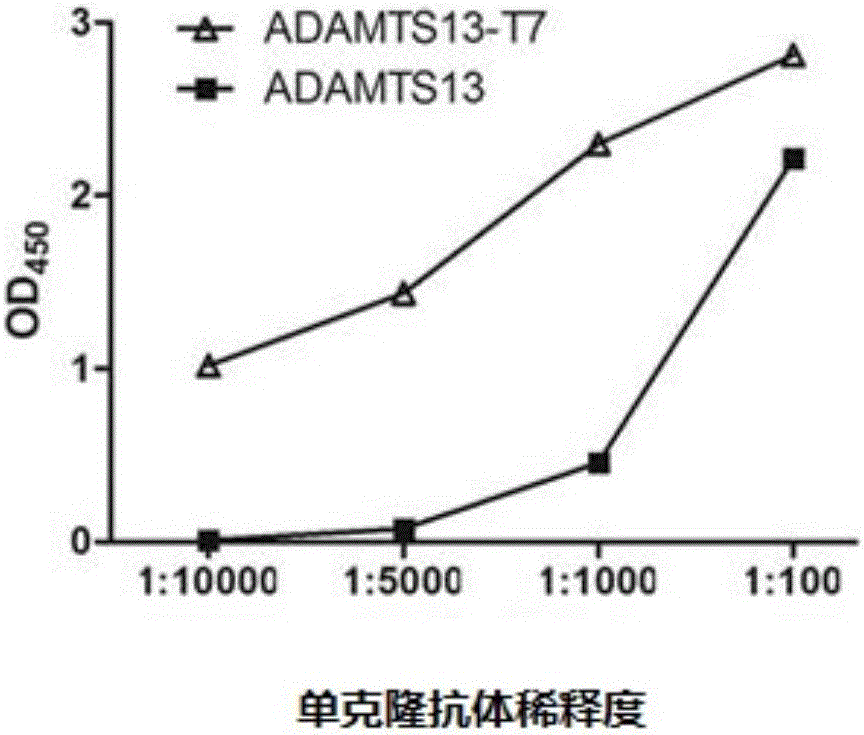Inhibitory monoclonal antibody resistant to lyase of human von Willebrand factor (VWF) and application of inhibitory monoclonal antibody
A monoclonal antibody, hemophilia factor technology, applied in the field of immunology to achieve the effect of increasing targeting and specificity
- Summary
- Abstract
- Description
- Claims
- Application Information
AI Technical Summary
Problems solved by technology
Method used
Image
Examples
Embodiment 1
[0030] Example 1 Preparation of immunogen—recombinant human von Willebrand factor lyase truncated protein ADAMTS13-T7
[0031] (1.1) Transformation amplification and quantification of eukaryotic expression vectors
[0032] The pSecTag-ADAMTS13-T7 plasmid was transformed into E. coli Escherchia coli DH5α competent, and incubated overnight at 37°C after plating. Pick positive clones, amplify and culture overnight on a bacterial shaker at 37°C, collect bacteria by centrifugation at 4°C, and extract plasmids with a plasmid extraction kit (operate according to the kit instructions). The plasmid was identified by Hind III and Xho I double enzyme digestion.
[0033] (1.2) Transfection of HeLa cells with pSecTag-ADAMTS13-T7 plasmid
[0034] HeLa cell culture: HeLa cells were cultured in DMEM (Dulbecco's Modified Eagles Medium) containing 10% calf serum. 24 hours before transfection, the cells were seeded in 24 cell culture well plates (1.0 × 10 5 / mL), to 60-80% fusion.
[0035] ...
Embodiment 2
[0056] Example 2 Preparation of Monoclonal Antibody Specific Anti-Von Willebrand Factor Lyase
[0057] The monoclonal antibody of the present invention can be prepared using conventional immunological methods and hybridoma technology (Köhler and Milstein, Nature, 215:495-497, 1975).
[0058] First, 8-week-old female Balb / c mice (Experimental Animal Center, Shanghai Academy of Sciences) were immunized with purified ADAMTS13-T7 protein for three times with an interval of four weeks. The first two times were multi-point subcutaneous injection on the back plus intraperitoneal injection, and the third time was injection through the mouse tail vein plus intraperitoneal injection.
[0059] After the serum antibody titer of the immunized mice reached a high enough level, the animals were sacrificed and spleen cells were isolated. Using the standard monoclonal antibody cell fusion technology, the spleen cells of the immunized Balb / c mice were fused with the mouse SP2 / 0 myeloma cells (...
Embodiment 3
[0062] Embodiment 3 detects the chemical property of monoclonal antibody
[0063] (1) It was confirmed by the double-diffusion method that the monoclonal antibody SZ-169 of the present invention belongs to the IgG1 subclass.
[0064] (2) The monoclonal antibody SZ-169 was inoculated in the peritoneal cavity of Balb / c mice to produce ascites, which was purified by BeaverBeadsTM ProteinA / G Matrix antibody purification magnetic beads, dialyzed in PBS, and the IgG content was measured with a UV spectrophotometer. Ascites can be purified to obtain IgG 3-6mg.
[0065] (3) Determination of the specificity of SZ-169 by ELISA experiment: the titer of the purified antibody was detected by ELISA method. Purified ADAMTS13-T7 protein and ADAMTS13 full-length protein were prepared in carbonate buffer to 1 μg / mL, 100 μl / well plated, overnight at 4°C; washed twice with 0.05% Tween-PBS, blocked overnight with 2% BSA-PBST , after washing as above, add 100 μl of purified antibody (1:100, 1:100...
PUM
 Login to View More
Login to View More Abstract
Description
Claims
Application Information
 Login to View More
Login to View More - R&D
- Intellectual Property
- Life Sciences
- Materials
- Tech Scout
- Unparalleled Data Quality
- Higher Quality Content
- 60% Fewer Hallucinations
Browse by: Latest US Patents, China's latest patents, Technical Efficacy Thesaurus, Application Domain, Technology Topic, Popular Technical Reports.
© 2025 PatSnap. All rights reserved.Legal|Privacy policy|Modern Slavery Act Transparency Statement|Sitemap|About US| Contact US: help@patsnap.com



